Historic Center of the City of Puebla: An Architectural and Urban Heritage
Due to its rich architectural and urban heritage, Puebla has been considered one of the most beautiful cities in the Mexican Republic due to the great number of cultural expressions it preserves.
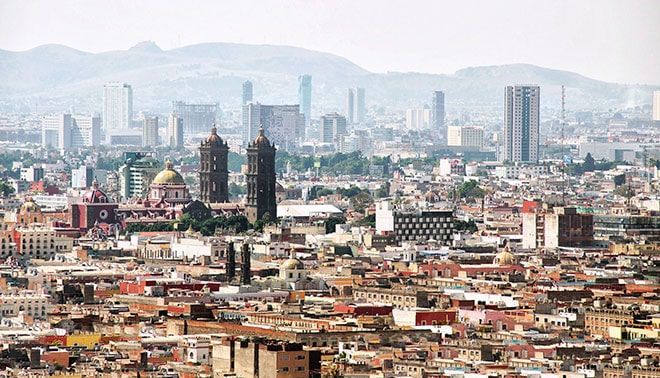
Puebla has been considered one of the most beautiful cities in the Mexican Republic for the significant number of cultural manifestations that it preserves, rich in its architectural and urban heritage. Due to its peculiar characteristics, throughout history, it has been admired and praised by different characters, chroniclers, travelers, and intellectuals. Its peculiar characteristics have been recognized over time by historians, researchers, and writers, both Mexican and foreign. As the illustrious art historian, Francisco de la Maza said: it has "a complete history.... [and is a compendium] of all our Colonial Art".
In the 16th century, the Second Audience of Mexico decided to found a trial republic of Spaniards in a strategic place, an intermediate site on the road that connected Mexico (capital of the viceroyalty) with the port of Veracruz (main point of communication between New Spain and Europe), being at the same time the border of several indigenous lordships, to establish a community of peninsular laborers who lacked the privilege of entrusted native peoples. This purpose materialized with the founding of Puebla de los Angeles in 1531.
The beginnings of the town were difficult due to the floods suffered, which is why it had to be founded again, although on a higher and safer site. The layout in this new site was in the grid, following the classic model, "to square and compass" and throwing the streets to string, which resulted in a uniform, regular grid and geometrically aligned streets, all of them with 14 "varas castellanas" wide, (a "vara castellana" is equivalent to 83.8 cm).
The four angles formed at the corners of their crosses faced the four cardinal points. The rectangular blocks were identical in dimensions (100 by 200 Castilian rods); each one of them contained eight plots of 50 by 50 rods. One of the central blocks was designated as Plaza Mayor, being this space the generating and most relevant center of the city, in whose perimeter the buildings of the civil and religious authorities were arranged.
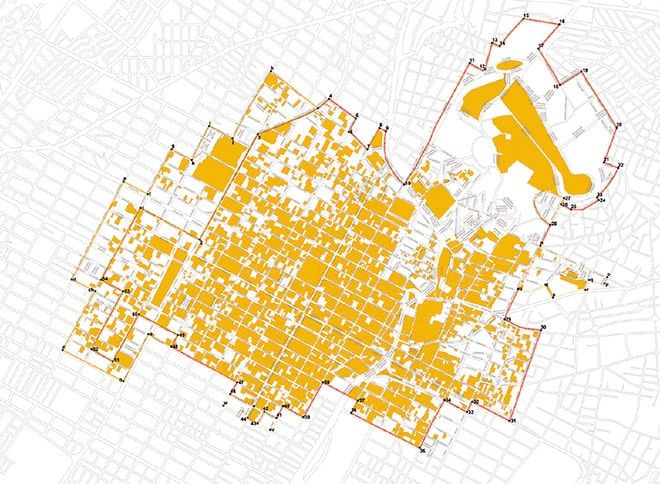
The growth of the city of Puebla
The growth of the city during the seventeenth and eighteenth centuries continued the same grid layout, with important manifestations of Gothic, Renaissance, Mannerist, and especially Baroque architecture, which gave it a very characteristic and distinctive stamp, a historical moment in which the use of stonework, mortar, brick, and tile in abundance in the ornamentation of its buildings gave it its characteristic personality. Thus, Puebla de los Angeles keeps great unity in its urban and architectural physiognomy that was little altered by the construction of neoclassical and eclectic buildings in the 19th century.
Throughout the viceregal period and until the first decades of the twentieth century the city of Puebla largely preserved its urban structure. At the end of the Mexican Revolution, the city practically occupied the old colonial layout, a time when it began to expand with the creation of new neighborhoods on its periphery, on several occasions varying the orientation and the grid layout.
Since the third decade of the twentieth century, the area of what was the city of Puebla until the end of the nineteenth century has been proportionally reduced within the expansive and growing urban area, becoming a sector of the city, which preserves and has specific characteristics, acquired throughout its history, among which stand out having its image and physiognomy. This type of space has been called historic centers, as expressed in the final document of the Quito Colloquium (1977), which considers them as such:
[...] all those living human settlements, strongly conditioned by a physical structure coming from the past, recognizable as representative of the evolution of a people [...].
defined as:
[...] areas of cultural and architectural value that are part of a metropolitan area or city of considerable population, possessing complex and diversified functions and a significant demographic density. They constitute the central area of urban agglomerations of ancient foundations that have experienced the growing impact of urbanization in this [20th] century [...].
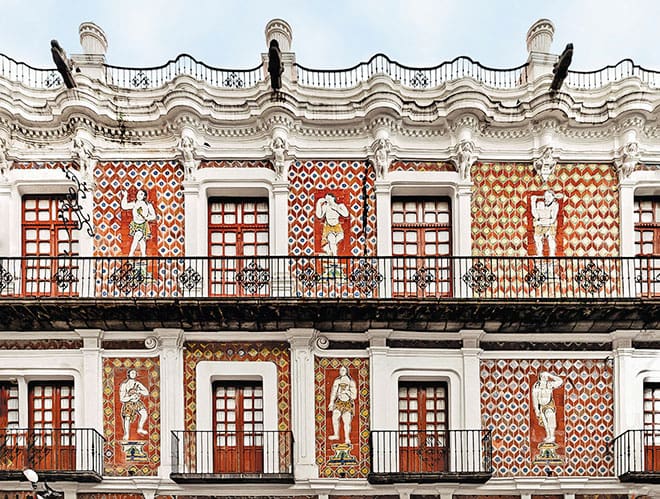
Particular urban physiognomy
Puebla, compared to other historic Mexican cities, continues to have a very particular urban physiognomy, in which the civil and religious architecture built from the sixteenth century to the first two decades of the twentieth century, has given a characteristic and personal stamp to its historic center. The area it comprises is characterized by preserving urban and architectural harmony and unity.
In general terms, the urban structure is the urban skeleton with the layout of its streets and blocks, its grid layout, the number of lots that make up a block, the presence of open spaces, the main square in the center, the grid in which secondary squares and small squares are inserted, neighborhoods, promenades, perspectives and deliberately planned baroque visual finishes, presence of defined street furniture, public fountains, and bridges, including Analco.
In its physiognomy, provided by its architecture, to count on the uniformity in the alignment of the facings of the buildings of a street, the configuration of urban profiles in which the monumental churches stand out over the uniformity of the other buildings of the same street, the use of certain constructive techniques, as well as local ornamental materials that give it an own and regional seal, predominance in facades of massive over openings, as well as the verticality in the disposition of doors and windows, having and keeping harmony and rhythm in its placement in the facings.
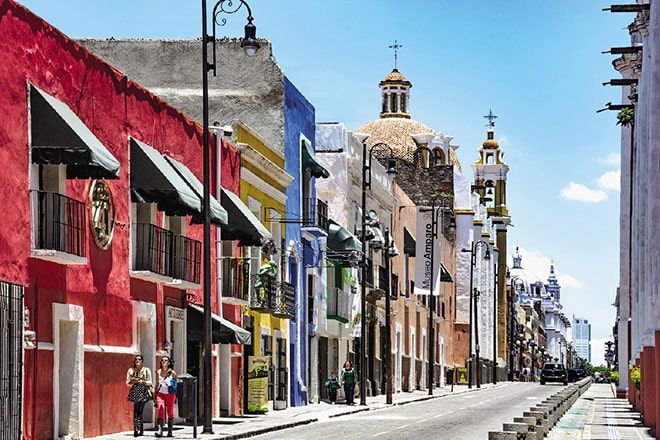
UNESCO World Cultural Heritage
Sometimes, the heritage of a place is so important at the international level that it is declared by UNESCO as World Cultural Heritage, without ceasing to be the heritage of the country in which it is located. The Convention for the Protection of the World Cultural and Natural Heritage of UNESCO grants such declaration considers those places that are irreplaceable sources of life and inspiration and have an exceptional value for humanity, being unique and legacies of history.
This heritage is made up of sites representative of diverse cultures, which, having been declared world heritage, belong to all the people of the world, regardless of where they are located. Giving them this distinction seeks above all their protection and preservation, to guarantee their transmission to future generations, as well as to promote their identity.
The historic center of the city of Puebla in 1987 received the distinction granted by UNESCO as Cultural Heritage of Humanity, considering that it has an exceptional universal value for humanity from the point of view of history and art, being unique and at the same time representative of Mexican culture. Giving it this special distinction seeks above all its protection, preservation, and conservation.
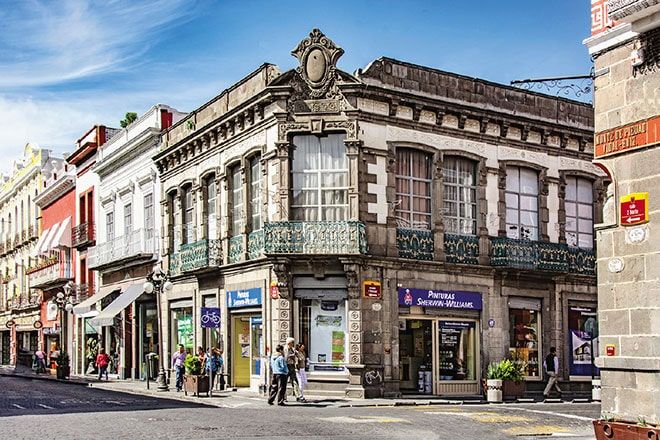
Mexicans, and particularly the people of Puebla, have acquired the great responsibility of being custodians and protectors of the heritage of the historic center of the city of Puebla. It should be noted that the distinguished designation can be lost if the heritage of the historic center, as well as its urban image, is not respected, transgressed, or deliberately altered.
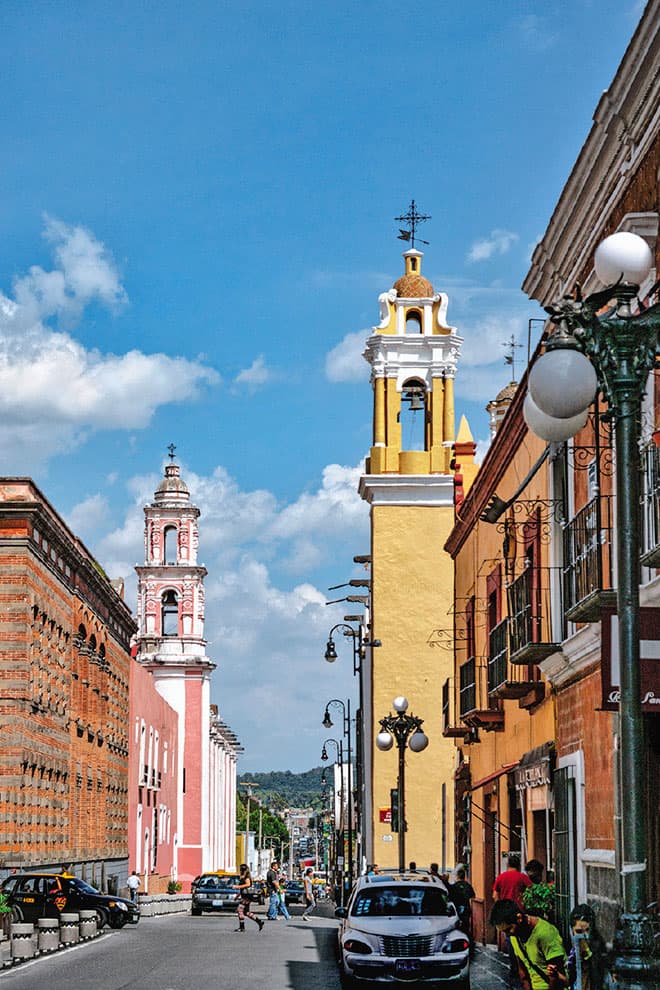
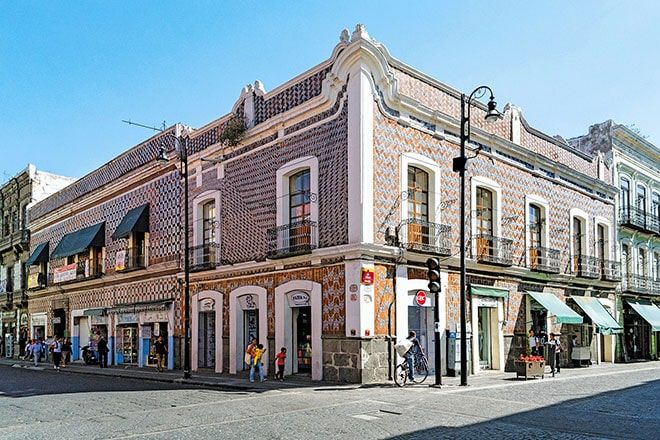
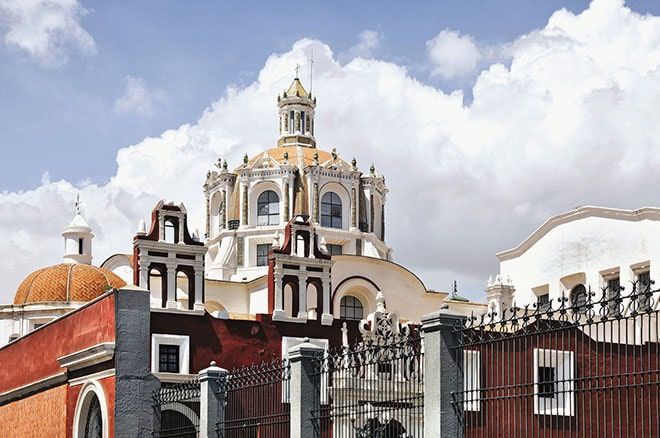
Source: Terán Bonilla J. A. Historic center of the city of Puebla,
World Cultural Heritage of Humanity. Elementos 122 (2021) 5-12




